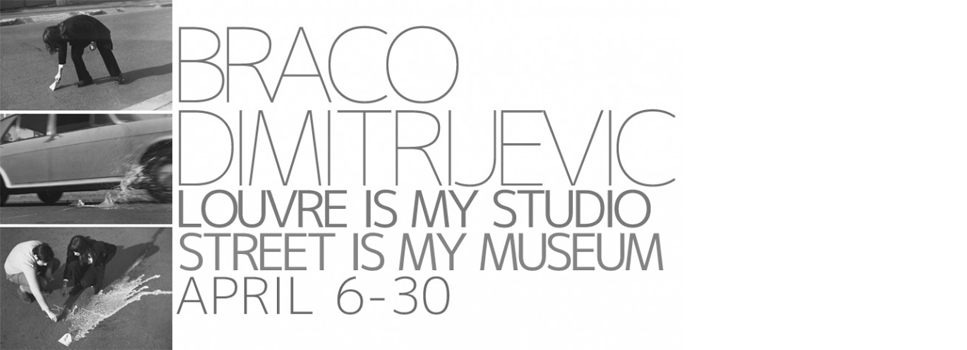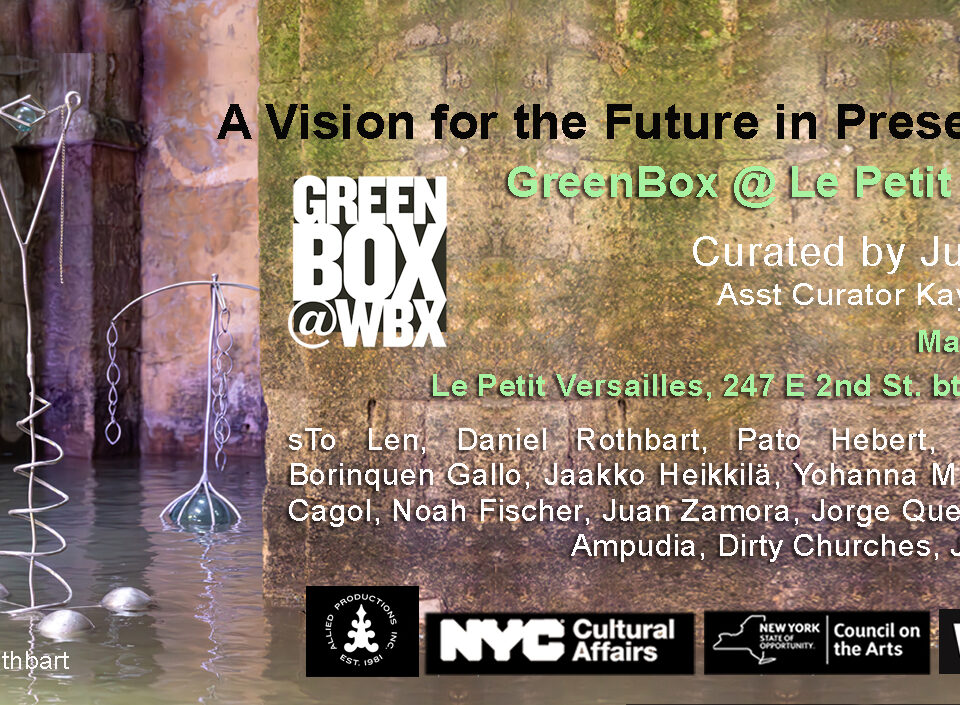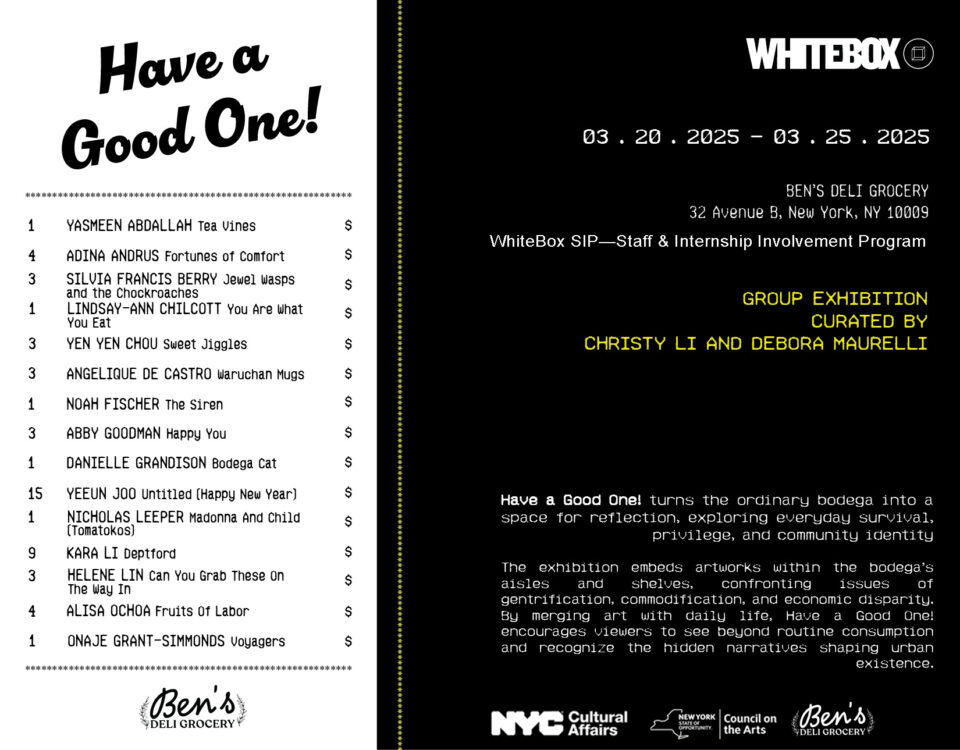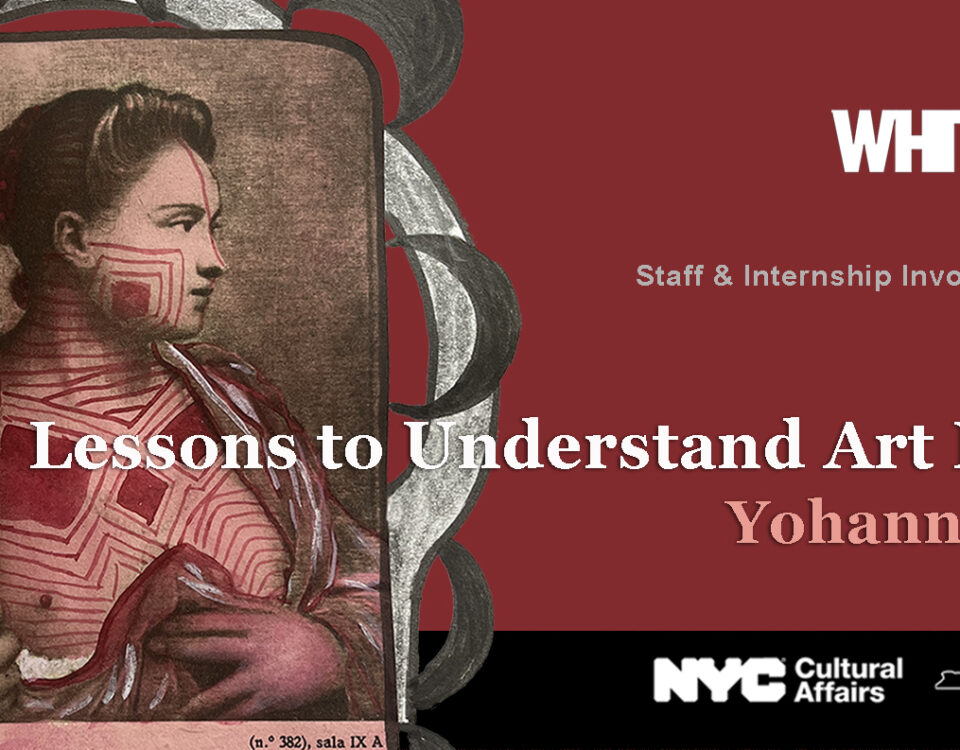LEON VRANKEN: DON’T WHISTLE TILL YOU’RE OUT OF THE WOOD
March 4, 2011HOW TO PHILOSOPHIZE WITH A HAMMER
August 11, 2011Curated by Lara Pan
April 6 – April 30, 2011

White Box is proud to announce the first comprehensive US survey of Braco Dimitrijevic (b. 1948, Sarajevo, Yugoslavia), curated by independent curator Lara Pan.
Following its commitment to presenting major solo exhibitions of seminal artists such as Michael Snow, Dennis Oppenheim, Hans Breder, Carolee Schneemann, Conrad Atkinson, Tim Rollins, Gunter Brus and Herman Nitsch, White Box presents Braco Dimitrijevic, a pioneer of conceptual art emerging in the second half of the 1960s. Dimitrijevic can be credited as the first Eastern European artist to gain international recognition and is among the most important artists originating from this region.
Dimitrijevic gained this recognition with his 1970s Casual Passer-by series, in which gigantic photo portraits of anonymous people were displayed prominently on facades and billboards in European and American cities. By making unknown individuals the subject of massive photo-portraits in public places, essentially erecting monuments in honor of anonymous citizens, Dimitrijevic has been a leading instigator of artistic interventions in the semiotics of the public space. Furthering the Casual Passer-by series initiative, in 1979 Dimitrijevic erected a 12 meter tall marble obelisk in a public park in Berlin, dedicated to the birthday of a random passer-by whom he had met on the street. Dimitrijevic’s seminal work in this area lead to the coining of the term Transemorials, used to describe the practice of shifting the meaning of monuments, large public portraitures and memorial plaques.
In Louvre is my Studio, Street is my Museum, White Box exhibits the artist’s iconic early conceptual works, including Flag of the World (1963) in which Dimitrijevic replaces a boat’s flag with a cloth he used to clean paint brushes in his studio. In works such as Accidental Sculpture (1968), Accidental Drawing (1968), and Painting by Kresimir Klika (1969) the artist sets up initial situations which are then completed by the casual actions of passers- by. These works clearly illustrate the artist’s interest in allowing people to intervene with urban environments through participation. Braco Dimitrijevic’s work and his theoretical book Tractatus Post Historicus (1976) were an important influence on two tendencies that dominate artistic discourse today: critical practices in the public sphere and the intervention with museum collections. As the artist notes, “When the idea of working in the public space became too popular with other artists, I moved to the most elitist studio one can have – the museum.” In the same year as the publication, Dimitrijevic initiated a new cycle of works, Triptychos Post Historicus, in which he transforms paintings by Kandinsky, Picasso, Monet, Manet and Mondrian into three-dimensional still lifes. Creating compositions that incorporate seminal works from the Berlin Nationalgalerie’s permanent collection, ordinary objects, fruit and vegetables, Dimitrijevic blurs the hierarchy between high art and everyday life, allowing them to coexist on an equal level. Triptychos Post Historicus brought revolutionary change to the iconoclastic aesthetics of conceptual art while simultaneously providing a conceptual critique of the Museum. Braco Dimitrijevic has had 160 solo exhibitions including shows at Tate Gallery in London, Kunsthalle in Bern, Ludwig Museum in Cologne, Kunsthalle in Dusseldorf, Israel Museum in Jerusalem, MUMOK in Vienna, ICA in London and Van Abbemuseum in Eindhoven. Dimitrijevic has also participated in important group exhibitions in numerous museums including: the Solomon R. Guggenheim Museum in New York, Musée National d’ Art Moderne Centre G. Pompidou, Musée d’Orsay and the Louvre in Paris, Tate Gallery in London, Kunsthalle in Bern, Museum Ludwig in Cologne, Israel Museum in Jerusalem, Van Abbemuseum in Eindhoven and the Russian State Museum in St. Petersburg. The long list of exhibitions also includes three participations at Documenta in Kassel (1972, 1976 and 1993), four participations in the Venice Biennale (1976, 1990, 1993, 2009), the São Paulo Biennale, SITE Santa Fe, Sydney Biennale, Havana Biennale, Valencia Biennale, ‘Rhetorical Image’ at the New Museum of Art in New York, Moscow Biennale, Magiciens de la Terre at Centre G. Pompidou in Paris, etc. Braco Dimitrijevic’s artistic vision and discourse in many ways anticipated several later tendencies. His Casual Passer-by works heralded the spread amongst the Neo-conceptualists of using the semiotics of urban space to insert alternative messages. In the Triptychos Post Historicus series, Dimitrijevic’s interventions with museum collections and his critique of the evolutionist paradigm applied to art history were ahead of an ‘appropriation’ tendency and Post Modernism.
Braco Dimitrijevic is currently having a solo exhibition at the National Museum of History and Art in Luxembourg, running through August 28th 2011.




